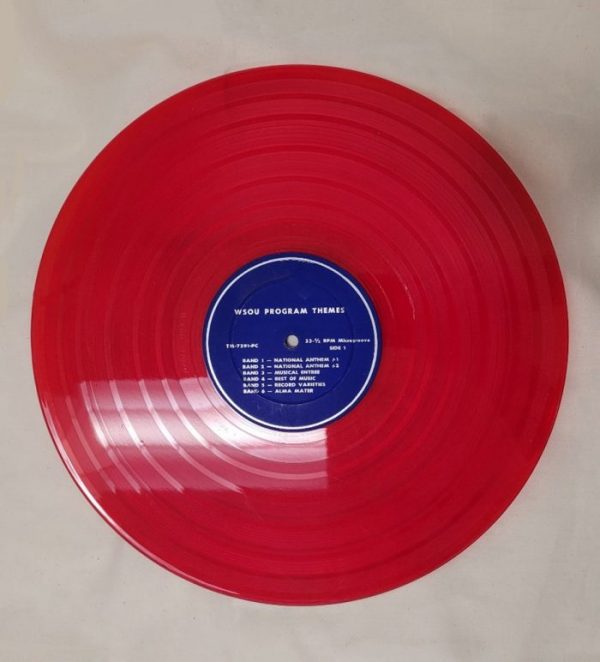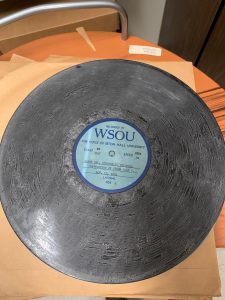WSOU – Theme Music Record
c. 1954
WSOU 89.5 FM – THE FIRST BROADCAST
Seventy-three years ago, on April 14, 1948, Seton Hall University’s award-winning radio station, WSOU, aired its inaugural broadcast. It was the first college-owned FM station in New Jersey and one of the first FM stations in the United States.[1] Broadcasting on 89.5 FM, WSOU was founded on a directive by the forward-thinking and indefatigable Monsignor James Kelley, who served as president of the university from 1935 until 1949. Monsignor Kelley is credited with transforming Seton Hall University from a small college into a large and distinctive university with a burgeoning student body.[2] The student-run station was intended to provide experiential learning opportunities in a professionally managed radio station and continues to do so presently.[3]
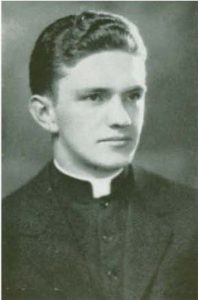
The task of starting the station fell to Monsignor Gillhooly, who got WSOU up and running in under three months. Assisting Monsignor Gillhooly with this monumental task was chief engineer Tom Parnham who would remain at the station until his death in 1994. The radio station was originally located on the first floor of the university’s recreation center. In 1998, the station moved to a new state-of-the-art facility where it continues to broadcast to an estimated on-air audience of 120,000 listeners each week within an approximate 50-mile radius that extends to all five boroughs of New York City and most of northern and central New Jersey. [4]
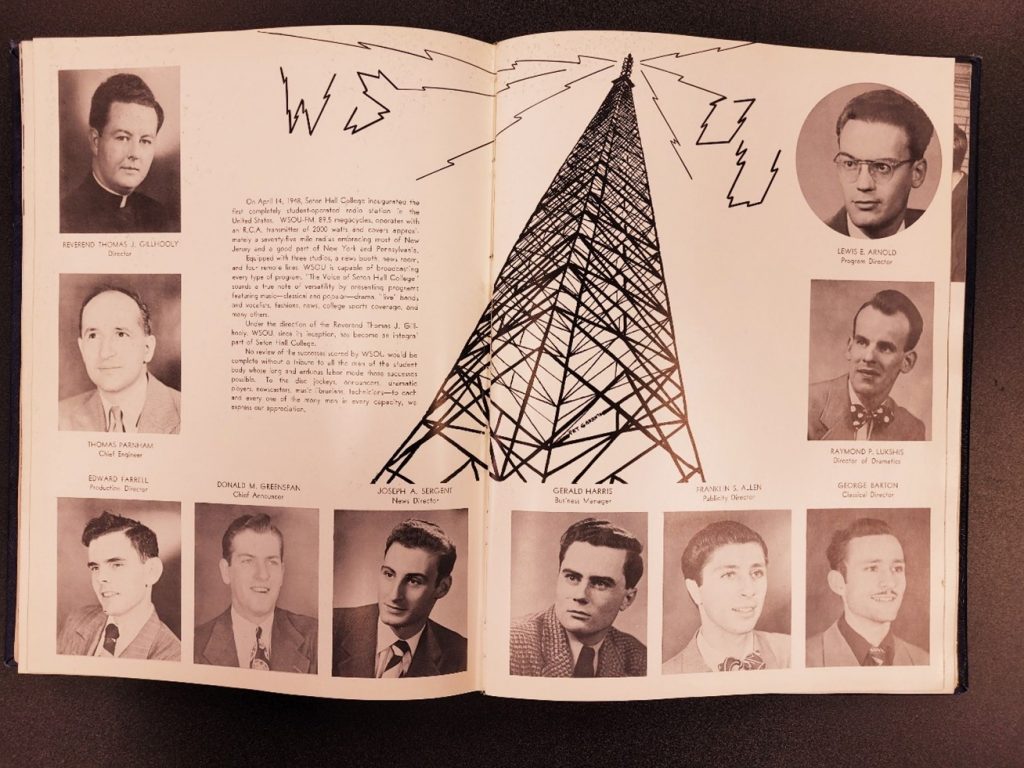
For over 70 years, WSOU has been nurturing on-air talent and many students have gone on to very successful careers in broadcasting. Notable WSOU alumni include Anthony Delia, national manager of Atlantic Records[5] which has represented talent like Aretha Franklin and Bruno Mars;[6] television producer Christina Deyo who worked on the Martha Stewart Show and The Rosie O’Donnell Show;[7] Emmy Award winning New York Yankees broadcaster Ed Lucas;[8] and Matt Loughlin, New Jersey Devil’s sportscaster.[9] The yearbook page below features student disc jockeys (center right) Don Cheek, Jack Ferry and Roy Lamont. Cheek would go on to teach in the Africana Studies Program at California State University at Fresno,[10] while Lamont would continue in the business as an independent media broadcaster, settling in North Carolina.[11]
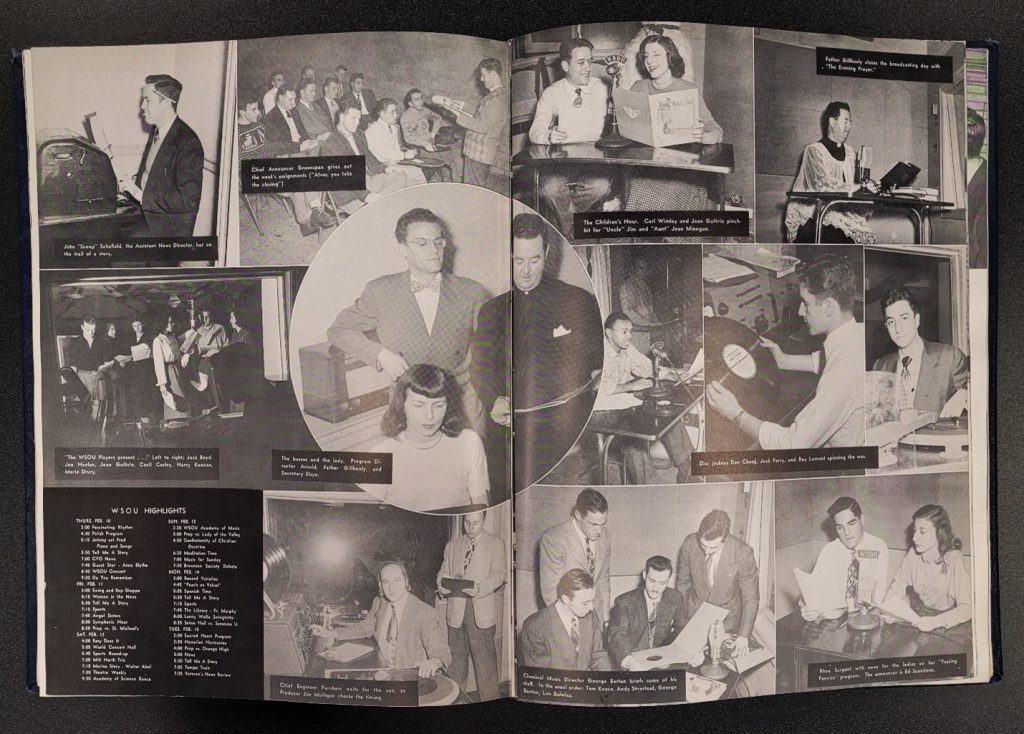
In 2009, Seton Hall University’s Walsh Gallery hosted “The Loudest Rock: 60 Years of Pirate Radio,” an exhibition commemorating WSOU’s 60th anniversary. The exhibition was curated by Jake Calvert, Brooke Cheyney and Katherine Fox, then graduate students in the university’s Museum Professions Program. The exhibit featured artifacts including gold records, original technology such mixing boards and tape decks, as well as memorabilia from the university’s collections. The students worked with station manager Mark Maben and engineer Frank Scafidi to create interactive exhibition components. Maben continues his work as the station’s general manager, while Scafidi continues his work as the chief engineer. [12] The Walsh Gallery’s exhibition catalogue is available for download on their website.
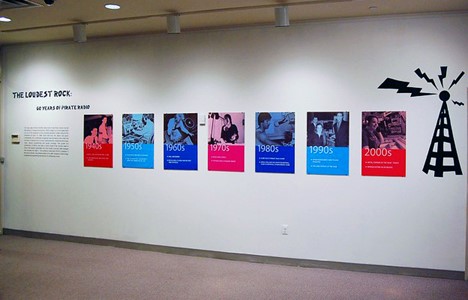
March 2 – April 10, 2009.
The images and materials shown here are but a small part of the vast patrimony available to students, faculty and researchers. For access to this or other objects in our collections, complete a research request form to set up an appointment or contact us at 973-761-9476.
[1] https://en.wikipedia.org/wiki/WSOU, accessed 3/30/2021.
[2] https://www.nytimes.com/1996/09/14/nyregion/msgr-james-kelley-94-a-president-of-seton-hall.html, accessed 3/30/2021.
[3] https://wsou.shu.edu/about.cfm#.YGN81q9KhPZ, accessed 3/30/2021.
[4] https://en.wikipedia.org/wiki/WSOU, accessed 3/30/2021.
[5] https://en.wikipedia.org/wiki/WSOU, accessed 3/30/2021.
[6] https://www.atlanticrecords.com/artists, accessed 3/30/2021.
[7] https://en.wikipedia.org/wiki/WSOU, accessed 3/30/2021.
[8] https://en.wikipedia.org/wiki/Ed_Lucas, accessed 3/30/2021.
[9] https://en.wikipedia.org/wiki/Matt_Loughlin, accessed 3/30/2021.
[10] http://www.fresnostate.edu/socialsciences/afrs/faculty/cheek.html, accessed 3/30/2021.
[11] https://www.linkedin.com/in/roy-lamont-9011b08/, accessed 3/30/2021.
[12] https://www.shu.edu/profiles/scafidfr.cfm, accessed 3/30/2021.
